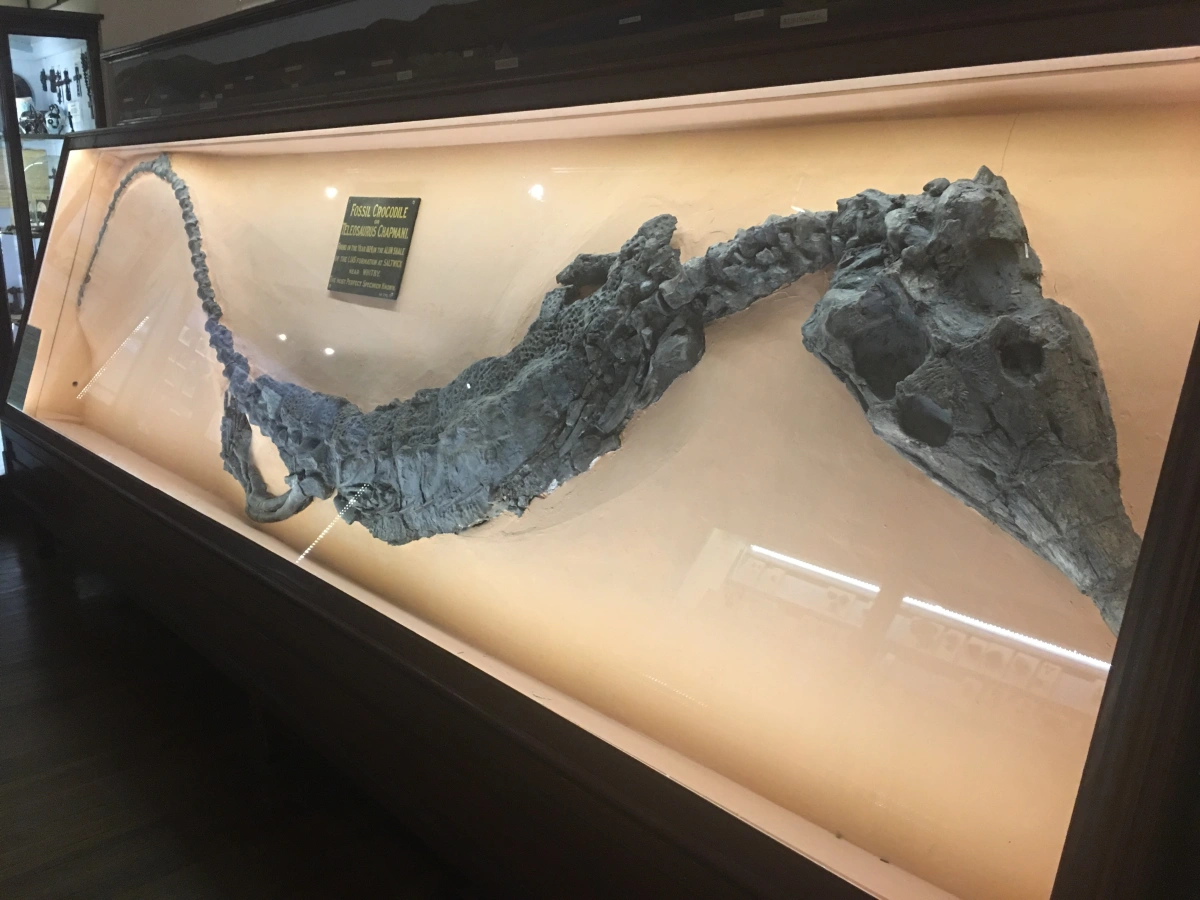Whitby’s Teleosaurus Chapman is a remarkable specimen in the realm of paleontology, a relic from the ancient seas that once covered the region. To delve into the tale of this creature is to journey back millions of years, to a time when reptiles ruled the waters with a grace and power that still captivates the imagination.

The story begins in the town of Whitby, nestled on the rugged coast of North Yorkshire, England. This picturesque town, with its rich history and stunning landscapes, holds within its limestone cliffs secrets that have fascinated scientists and enthusiasts for centuries. It was here, in the mid-19th century, that the discovery of a lifetime was made.
In 1851, the remains of an ancient marine reptile were unearthed from the Jurassic-era rocks near Whitby. This discovery would later be identified as belonging to the genus Teleosaurus, a type of prehistoric crocodile that roamed the seas around 180 million years ago. The specimen, affectionately named after its discoverer, Mr. Chapman, became known as Whitby’s Teleosaurus Chapman, and it quickly garnered attention from the scientific community.
Teleosaurus, meaning “perfect lizard,” was a formidable predator of its time. With its long snout filled with sharp teeth and a streamlined body built for swimming, it was well-adapted to hunt in the ancient oceans. These creatures were among the first marine reptiles to evolve and diversify during the early Jurassic period, filling ecological niches similar to those occupied by modern-day marine predators like sharks and dolphins.
The discovery of Whitby’s Teleosaurus Chapman provided valuable insights into the anatomy and behavior of these ancient creatures. The exceptionally preserved fossil allowed scientists to study its skeletal structure in detail, revealing clues about its evolutionary adaptations and lifestyle. By analyzing the size and shape of its teeth, researchers could infer its dietary preferences and hunting strategies, painting a vivid picture of Teleosaurus as a top predator of its ecosystem.
But perhaps the most intriguing aspect of Whitby’s Teleosaurus Chapman is the story it tells about the geological history of the region. The fossil was found in the Whitby Mudstone Formation, a geological formation dating back to the Toarcian stage of the early Jurassic period. This period was marked by dramatic environmental changes, including rising sea levels and fluctuations in oceanic oxygen levels, which had profound effects on marine life.
Studying fossils like Whitby’s Teleosaurus Chapman allows scientists to reconstruct ancient ecosystems and understand how organisms responded to environmental shifts over geological timescales. By piecing together the puzzle of life in the Jurassic seas, researchers can gain valuable insights into the processes of evolution and adaptation that have shaped the world we inhabit today.
Today, Whitby’s Teleosaurus Chapman stands as a symbol of the town’s rich natural history and continues to inspire curiosity and wonder in visitors and researchers alike. Its discovery remains a testament to the importance of preserving and studying the Earth’s geological heritage, reminding us of the deep connections between the past, present, and future of life on our planet.



